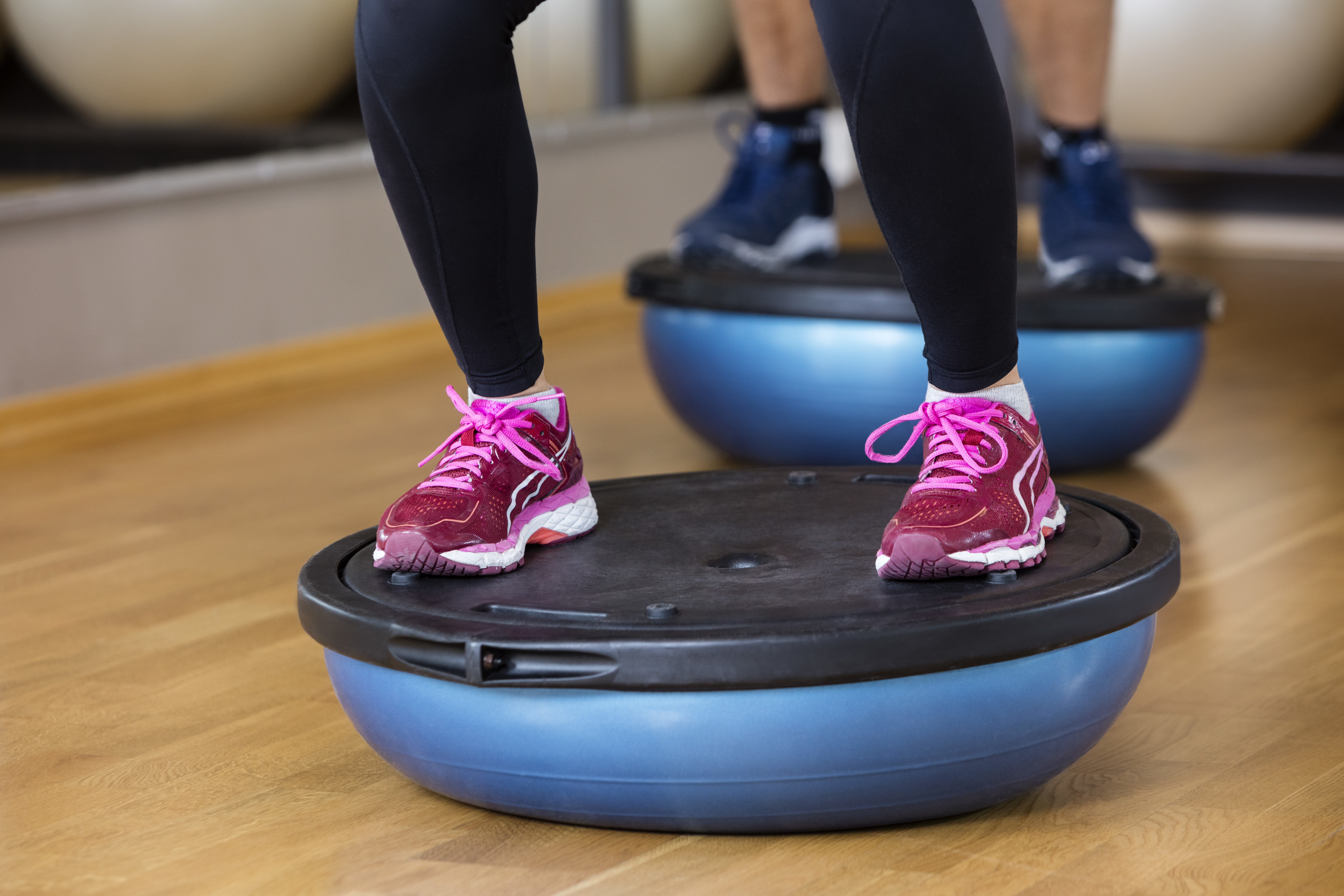Is your Exercise Routine Balanced?

Is there too much of one thing or a lack of another in your workouts? In today’s Operation Health@Home Fitness Education audio blog, Home Base’s Marlene DaCosta focuses on the importance of finding a balance in your exercise routines for safety and good health.
Let’s start by asking some basic questions about your current exercise routine. Are there any training elements missing from your current exercise routine that would make it more well-rounded? Have you or someone you know ever make the following statements?
“I just run, I don’t cross-train.”
“I only want to work my legs”.
“I only want to work on my upper body.”
“I hate cardio.”
“I walk a lot. I don’t need to strength train my legs.”
“I just want to work on my abs”.
“I don’t stretch.”
“I don’t have time to add anything else.”
Do any of these statements sound familiar? If the answer is yes, you are not alone. Many people tend to fall into a pattern of doing what is familiar, comfortable, and convenient. However, it is important to venture into other aspects of fitness. Oftentimes that realization comes after an injury or a reassessment of your fitness goals.
Where do you start? For starters, you can take a good look at what you are currently doing and how much time you devote to that particular activity in a given week. Ask yourself the following questions:
Do I warm up properly prior to my exercise session?
Do I devote most or all of my time to strength training or cardiovascular exercise?
Do I devote equal attention to different muscle groups when I strength train?
Do I perform exercises that would help to make me more mobile and flexible?
Let’s use Jane Doe as an example. Jane Doe may have a cardiovascular exercise program that consists of walking or running that is done 5 days per week for 60 minutes per session. Two days out of the week could be devoted to a shorter cardio session for 20-30 minutes with the remaining time of the 60-minute window devoted to a strength training routine and a 5-minute cooldown that consists of static stretching. Sessions would begin with a warm-up of lighter intensity cardiovascular exercise and or dynamic stretching which are also known as mobility exercises.
Another way of looking at Jane Doe’s program is through the lens of the SAID Principle. Basically, the SAID principle states that the type of demand placed on the body dictates the type of adaptation that will occur (1), inhibiting her ability to get better. Therefore, if Jane’s program was adjusted to include other activities such as resistance training, pre-workout warm-up drills, and post-workout static stretching, she can still do the activity that she loves while becoming more efficient at it and reducing her risk for injury.
The bottom line is that engaging in activities that are different:
Provides a rest from repetitive stress
Allows muscles that are weak an opportunity to be strengthened
Allows muscles to be used in a different manner than one is accustomed to
Can enhance performance for activities of daily living, sport or physical activity of choice
If you are looking for more specific examples of activities that can help to make your current routine more balanced, or tips to get you pointed in the right direction, the daily workouts offered through Operation Health@Home is a wonderful resource and a great place to start that has fitness videos and information for all levels of ability.
If you have questions about our fitness and wellness program at Home Base and how we can help you diversify your workout routine– please reach out to us! Visit homebase.org/fitness to learn more about our Warrior Health & Fitness Programs, and don’t forget to follow us on social media @homebaseprogram.
Reference:
- Baechele, T.R., and R.W. Earle. Essentials of Strength Training and Conditioning, 3rd ed. Champaign, IL: Human Kinetics. 2008.

About the Author: Marlene DaCosta, MA, ACSM-CEP, CSCS, CHWC is an Exercise Physiologist and Certified Strength and Conditioning Specialist with Home Base’s Intensive Clinical Program and Warrior Health and Fitness Program. She is also the owner and founder of Serape Fitness and Wellness, a business that provides in-home personal training and health and wellness coaching services to private clients in the Greater Boston Area.


 Home Base
Home Base